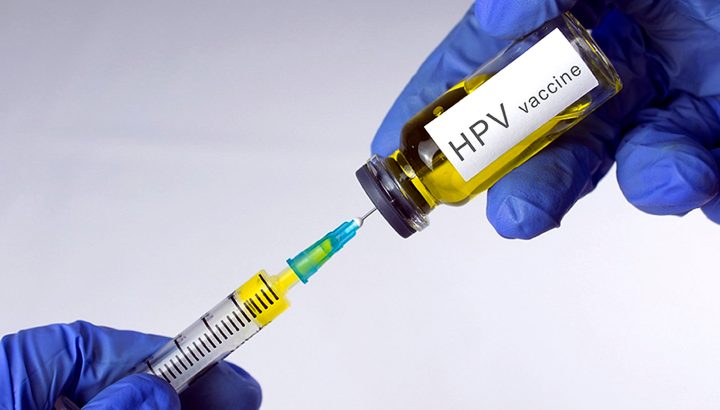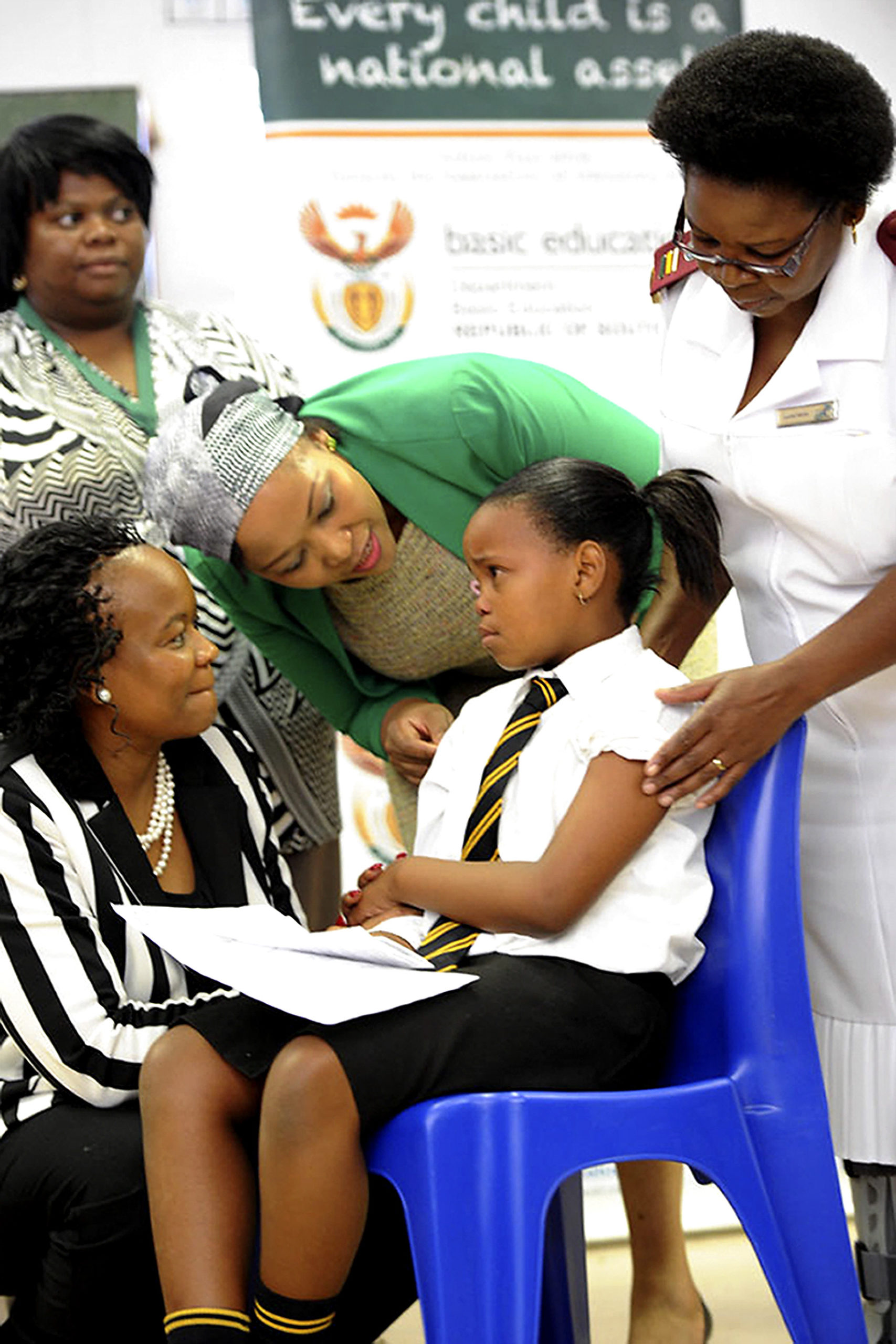SPOTLIGHT
HIV and cervical cancer: Behind South Africa’s dramatically high numbers

A recent study published in The Lancet found that women living with HIV made up an astonishing 63.4% of new cervical cancer cases in South Africa in 2018. Spotlight spoke to local experts about the links between HIV and cervical cancer in South Africa, and how cervical cancer is prevented, tested for and treated in the public sector.
A recent study published in The Lancet medical journal found that women living with HIV made up an estimated 63.4% of new cervical cancer cases in South Africa in 2018 – a dramatically higher percentage than the global level of around 6%. The study also found that women living with HIV on average have a sixfold higher risk of developing cervical cancer than women who are not living with HIV.
“In absolute terms,” the authors wrote, “most women with cervical cancer living with HIV were from South Africa.”
Of the estimated 33,000 new cases of cervical cancer in women living with HIV in 2018, around 8,200 were in South Africa. In total, including women who are not living with HIV, it is estimated there were around 570,000 new cervical cancer cases worldwide in 2018.
A cancer caused by a virus
“Cervical cancer is caused by an infection from the human papillomavirus (HPV). It is one of the viruses most strongly associated with cancer. It’s a very common virus, and it’s a very common sexually transmitted infection,” explains Prof Sinead Delany-Moretlwe, researcher and director of the Wits Reproductive Health and HIV Institute (Wits RHI).
Not all types of HPV, however, cause cervical cancer. According to the World Health Organization, there are over 100 types of HPV, and only two types are associated with most cervical cancer cases. These are type 16 and 18, and, according to the WHO, these cause about 70% of all cervical cancer.
A pathologist in clinical virology at Lancet Laboratories, Dr Karin Richter, says that so far, there are between 12 and 15 types of HPV that cause some form of cancer. These are known as High-Risk Types. She says all HPV types cause uncontrolled growth but affect different areas, like the skin. A good example is plantar warts, which are low risk and generally do not cause cancer.
High-Risk HPV
Delany-Moretlwe says if a woman is infected with a High-Risk HPV type, it does not mean that she will definitely develop cervical cancer. “In most people, they will have the infection and the infection will clear over time… but for a small percentage, the infection persists,” she explains.
“The longer it persists the more it is able to essentially take over the machinery of the cells and start replicating itself in the cells in a way that means the cells start to produce abnormally, and become abnormal cells and eventually cancer cells,” she adds.
Dr Nomonde Mbatani, senior specialist and head of the gynaecology oncology unit at Groote Schuur Hospital, explains that when a High-Risk Type of HPV infection lingers, the skin eventually responds to the irritation caused by the virus. This results in a change in the cells on a microscopic level, which will be picked up by a pap smear if one is conducted. If left untreated, these abnormal cells can progress to cancer, but this does not happen in every patient.
Link with HIV
According to The Lancet study, women living with HIV are both more likely to acquire an HPV infection and less likely to clear infection than are women without HIV, both factors that contribute to higher rates of persistent HPV infection.
Mbatani says that a compromised immune system, as well as smoking, are some of the risk factors associated with cervical cancer.
According to Richter, women living with HIV are particularly at higher risk of developing cervical cancer if they are not on antiretroviral treatment and have a low CD4 count. This is because their immune system might not be able to clear a High-Risk HPV infection.
Delany-Moretlwe agrees, and says that the earlier women living with HIV start treatment, and the longer they are on treatment, the less likely they are to have a persistent HPV infection.
“Aggressive roll-out of antiretroviral therapy is a really important strategy in cervical cancer prevention, in addition to the specific prevention strategies we do have, which are screening and vaccination,” she says.
Prevention is key
The thing with cervical cancer, Delany-Moretlwe says, is that it is preventable through an HPV vaccine administered before HPV exposure, and it is also easier to treat if caught early, making screening essential.
Mbatani explains that there are two methods of screening for cervical cancer that are used in the public health sector. The first is cervical cytology, which involves a pap smear, which can either be liquid-based or mounted on a glass slide.
She says that the liquid-based pap smear is more effective as it is easier to separate the abnormal cells for analysis. The pap smear where the specimen is mounted on a glass slide, she says, can present difficulties such as the slide breaking or the quality of the specimen collected being bad.
She adds that the difficulty with pap smears, in general, is the time it takes to get the results, as it has to be interpreted by a cytologist. If abnormal cells are detected, then the woman has to come back to the clinic or hospital, often leading to a loss to follow up.
According to the Cervical Cancer Prevention and Control Policy issued by the national Department of Health in 2017, women older than 30 years of age are allowed three free pap smears at 10-year intervals in the public sector. Women who are high risk, such as women living with HIV, should be screened more frequently: first upon HIV diagnosis and then every three years.
Another way of screening, which is the ideal according to Mbatani, is an HPV DNA test. The results are normally available within two hours and do not necessarily require a professional cytologist to interpret. This means a woman can wait at the health facility for her results and be treated the same day if treatment is necessary. But, says Mbatani, the test is expensive and not readily available in the public sector.
Because of the effect of the Covid-19 pandemic, there has been a decline in screening rates, says Mbatani. Even now, facilities such as Groote Schuur hospital can only focus on treating severe cases of HPV infection or cervical cancer, she says.
Spotlight asked the health department about the pandemic’s impact on both pap smear and HPV vaccination rates, but received no reply by the time of publication.
How is cervical cancer treated?
If abnormal cells are detected in the skin of the cervix, the treatment involves removing those cells. Mbatani says that this can be done either through some form of excision, burning, lasering or freezing of the area affected.
While this sounds painful, she explains the nerve supply to the cervix is minimal and most of the time these treatments are done as an outpatient procedure, using a local anaesthetic. There is the chance of the abnormal cells recurring, so patients are still required to go for regular pap smears.
If the abnormal cells progress to cancer, the treatment used depends on the stage of the cancer.
If caught in the early stages, surgery is the preferred treatment and is normally effective, says Mbatani.
If the cancer is only diagnosed at an advanced stage, she says that radiation treatment is the preferred method of treatment, as a combination of surgery and radiation therapy is not usually ideal due to severe side effects. The tumour might also already be too big to remove.
HPV vaccination
Cervical cancer is one of the few cancers that can be prevented with a vaccine, says Delany-Moretlwe.
“The real intervention that is going to change whether or not we are going to eliminate cervical cancer is how well we can scale up vaccination programmes,” she adds.
South Africa started a school-based HPV vaccination campaign targeting Grade 4 schoolgirls in 2014.
Women can also be vaccinated later in life, says Richter, but it has to be before exposure to HPV to be effective.
Wits RHI is currently working on a study to monitor the effectiveness of the HPV vaccination campaign in South Africa. The study, called the HOPE study, will monitor the effectiveness of a 2-dose and 1-dose HPV vaccination schedule on community-level HPV prevalence among South African adolescent girls.
Richter explains that there are two vaccines available in South Africa – Cervarix and Gardasil. She says Cervarix, which is used in the vaccination campaign, protects against HPV type 16 and 18, while Gardasil protects against 16 and 18 as well as 6 and 11, which causes genital warts.

Former minister of health Dr Aaron Motsoaledi launched the Human Papilloma Virus vaccine roll-out at Gonyane Primary in Mangaung in 2014. (Photo: GCIS)
What needs to change in cervical cancer treatment?
For Mbatani, the ideal would be that every woman over the age of 30 gets screened for cervical cancer. She says that, in general, more education is also needed to alert women about the need for screening before they have any symptoms of cervical cancer.
Richter outlines the need for a more intensive focus on prevention methods, such as HPV vaccination, as well as early identification and treatment of women living with HIV so that their immune systems are strong enough not to be at risk for HPV infection. DM/MC
This article was produced by Spotlight – health journalism in the public interest.















 Become an Insider
Become an Insider
Comments - Please login in order to comment.